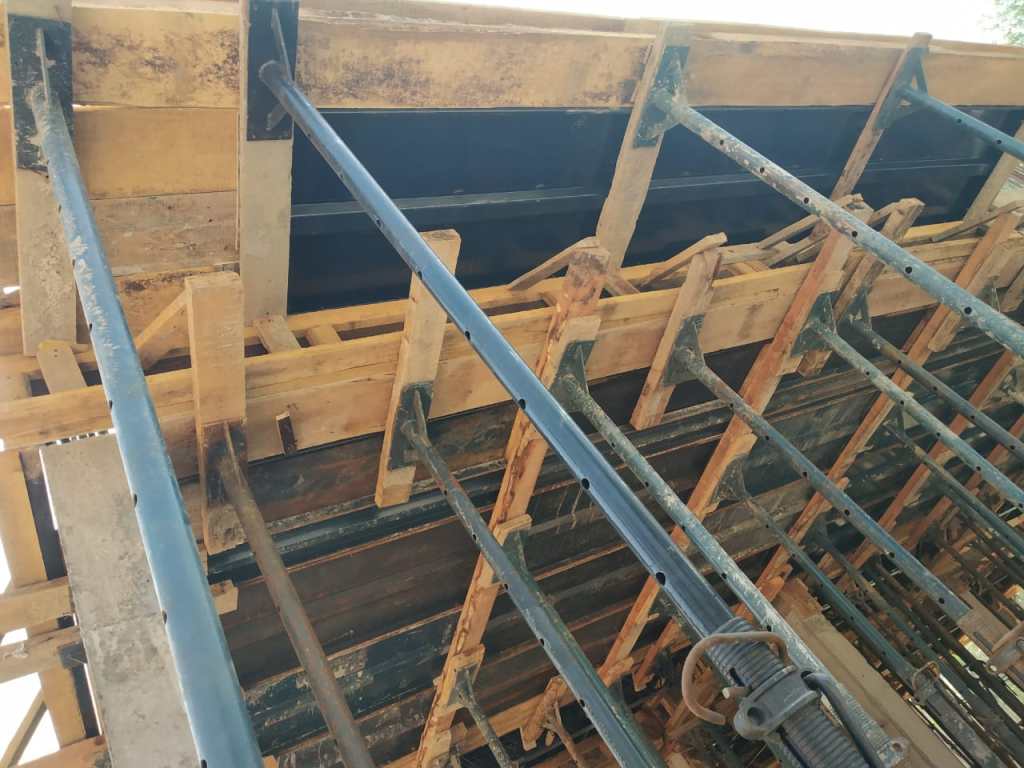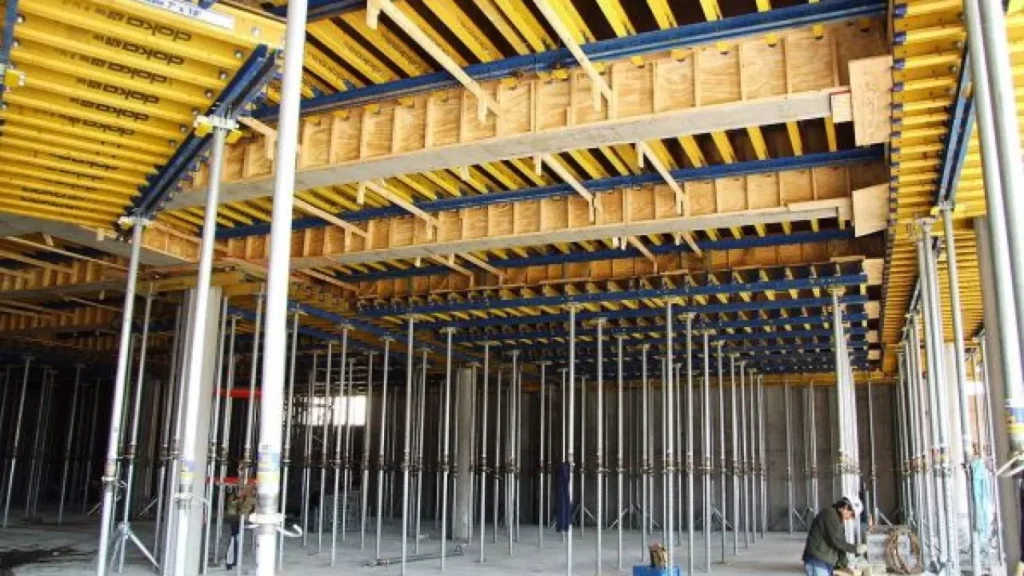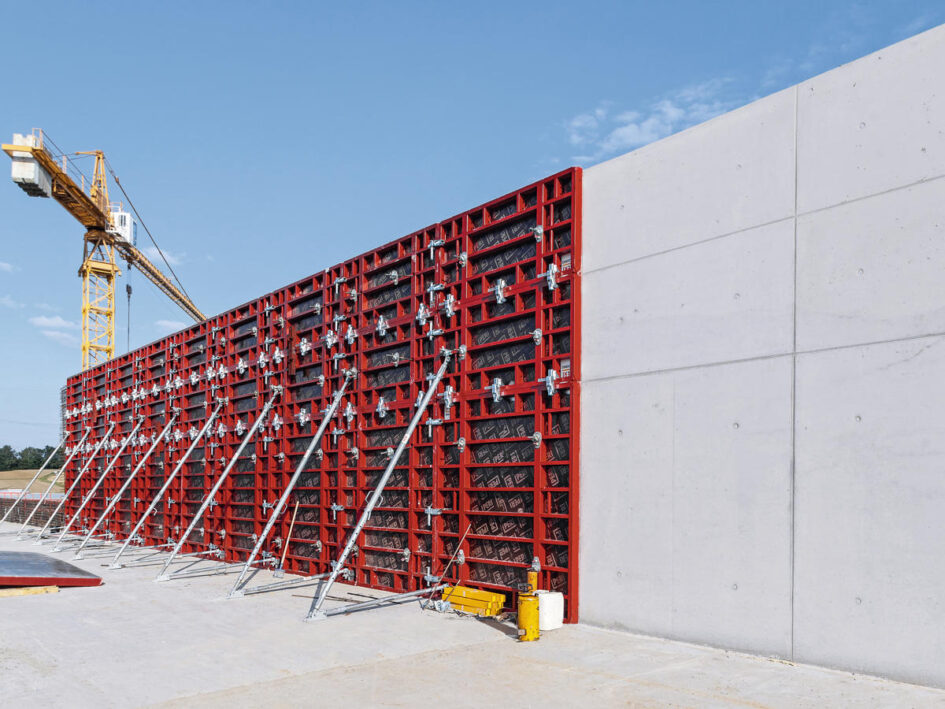Formwork plywood plays a crucial role in the construction industry as it provides a temporary structure that supports the concrete while it sets and hardens. This essential material offers numerous benefits, including durability, cost-effectiveness, and safety. In addition, formwork plywood is also environmentally sustainable, making it an ideal choice for builders and developers.
Understanding the Basics of Formwork Plywood
Before delving into the various aspects of formwork plywood, it is important to first grasp its definition and key features. Formwork plywood refers to a type of f17 grade plywood specifically designed for use in concrete formwork applications. It is typically made from high-quality hardwood veneers that are bonded together, resulting in a strong and dimensionally stable material.
Formwork plywood boasts several important features that make it an ideal choice for construction projects. It has excellent strength and stiffness properties, allowing it to withstand significant pressure from the weight of the concrete and other loads. Additionally, formwork plywood is smooth and flat, providing a high-quality finish to concrete structures. Learn more about the role of formwork plywood in achieving curved concrete forms.
Definition and Key Features of Formwork Plywood
Formwork plywood is a specialized type of plywood used in concrete formwork applications. It is made from high-quality hardwood veneers that are bonded together, creating a strong and dimensionally stable material. Key features of formwork plywood include its excellent strength and stiffness properties, as well as its smooth and flat surface finish.
Different Types of Formwork Plywood
There are different types of formwork plywood available, each suitable for specific construction needs. One common type is film-faced plywood, which is coated with a protective film on both sides. This film enhances the durability of the plywood by reducing moisture absorption and resistance to wear and tear. Another type is phenolic plywood, which is treated with a phenolic resin to make it resistant to water and chemicals. It is often used in applications where exposure to moisture is a concern.
Besides these types, other variations of formwork plywood include laminated plywood, which consists of multiple layers of veneers bonded together, and composite plywood, which combines the benefits of plywood and other materials, such as aluminum or plastic, to enhance its performance in specific conditions.
The Importance of Proper Formwork Plywood Selection
Choosing the right formwork plywood is crucial for the success of any construction project. The selection process involves considering various factors, such as the type of concrete being used, the expected loads, and the desired finish. For instance, if the project requires a smooth and flawless finish, a film-faced plywood would be an excellent choice due to its enhanced surface quality.
Furthermore, the durability and longevity of the formwork plywood should also be taken into account. Construction projects often involve repetitive use of formwork, and using a high-quality plywood that can withstand multiple uses without compromising its structural integrity is essential.

It is also worth noting that proper maintenance and care of formwork plywood can significantly extend its lifespan. Regular cleaning and inspection for any signs of damage or wear can help identify potential issues early on and prevent costly repairs or replacements.
In conclusion, formwork plywood is a specialized material that plays a crucial role in concrete formwork applications. Its excellent strength, stiffness, and smooth surface finish make it an ideal choice for construction projects. Understanding the different types of formwork plywood available and selecting the right one for specific needs is essential for achieving successful and durable concrete structures.
The Role of Formwork Plywood in Construction
Formwork plywood plays a crucial role in various aspects of construction, particularly in building structures and shaping concrete. Its versatility and strength make it an essential component during the construction process, ensuring the successful realization of architectural designs.
Formwork plywood is typically made from high-quality hardwood veneers that are bonded together to form a strong and durable sheet. These sheets are designed to withstand the pressure exerted by wet concrete without warping or bending, ensuring the structural integrity of the final construction. The smooth surface of formwork plywood also allows for easy release of the concrete after it has set, resulting in a clean and polished finish.
Formwork Plywood in Building Structures
When constructing buildings, formwork plywood provides the necessary support and framework for pouring concrete. It allows builders to create intricate shapes, angles, and curves, enabling the realization of complex architectural designs. The dimensional stability and flatness of formwork plywood ensure that the concrete maintains its desired shape during the setting and hardening process.
Moreover, formwork plywood is available in various thicknesses and sizes to accommodate different construction requirements. This flexibility allows builders to tailor the formwork to specific project needs, whether it involves creating large foundations or intricate architectural details. The lightweight nature of formwork plywood also makes it easy to handle and transport on construction sites, improving efficiency and productivity.
Formwork Plywood in Concrete Shaping
In addition to supporting building structures, formwork plywood is also used in concrete shaping. It enables the creation of various concrete elements such as columns, beams, walls, and slabs, ensuring accurate dimensions and a smooth finish. The formwork plywood acts as a mold, holding the concrete in place until it solidifies and achieves the desired shape and texture.
Furthermore, formwork plywood is reusable, making it a cost-effective and sustainable choice for construction projects. After the concrete has been poured and cured, the formwork plywood can be removed, cleaned, and used again for future construction tasks. This reusability not only reduces waste but also minimizes the need for new materials, contributing to environmentally friendly building practices.
The Benefits of Using Formwork Plywood
Using formwork plywood offers numerous advantages that contribute to the overall success and efficiency of construction projects. These benefits include its durability, strength, and cost-effectiveness, making it a preferred choice for builders and contractors.
Formwork plywood is a versatile and reliable material that plays a crucial role in ensuring the structural integrity of concrete elements in construction projects. Its ability to provide support and shape to freshly poured concrete makes it an essential component in forming walls, slabs, columns, and other structural elements. The durability and strength of formwork plywood make it ideal for withstanding the immense pressure and weight of wet concrete, ensuring that the concrete cures properly without any deformities.
Durability and Strength of Formwork Plywood
Formwork plywood is known for its excellent durability and strength. Its sturdy construction allows it to withstand the weight and pressure exerted by the concrete and other loads. Additionally, the smooth and flat surface of formwork plywood prevents the concrete from sticking to it, ensuring easy removal once the concrete has set and hardened.
Moreover, formwork plywood is resistant to warping, twisting, and moisture, which are common challenges faced during concrete construction. This resistance ensures that the formwork maintains its shape and integrity throughout the entire concrete pouring and curing process, resulting in high-quality finished structures with smooth surfaces and precise dimensions.
Cost-Effectiveness of Formwork Plywood
Compared to other formwork materials, such as steel or aluminum, formwork plywood is relatively more cost-effective. It is readily available and can be easily cut and shaped to fit specific project requirements. The reusability of formwork plywood also contributes to its cost-effectiveness, as it can be used multiple times before being recycled or repurposed.
Additionally, the lightweight nature of formwork plywood makes it easier to handle and transport on construction sites, reducing labor costs and improving overall efficiency. Its versatility allows for intricate designs and shapes to be achieved with ease, providing architects and engineers with the flexibility to bring their creative visions to life without compromising on structural integrity.

Safety Considerations When Using Formwork Plywood
While formwork plywood offers numerous advantages, it is important to consider safety measures when using it in construction projects. Proper handling and installation, as well as fire safety precautions, are crucial to ensure the well-being of workers and the integrity of the structure.
Formwork plywood is a versatile material commonly used in construction for creating temporary molds or forms into which concrete is poured. These molds support the concrete until it hardens and gains enough strength to support its weight. However, the use of formwork plywood involves inherent risks that need to be managed effectively to prevent accidents and ensure a safe working environment.
Handling and Installation Safety
When handling formwork plywood, it is important to follow proper lifting techniques to prevent strain or injuries. Workers should wear appropriate personal protective equipment, such as gloves and safety glasses, to ensure their safety. Additionally, proper installation of formwork plywood should be closely supervised to ensure stability and prevent accidents.
It is essential to inspect the formwork plywood for any defects or damage before use. Any warped or weakened sections should be identified and replaced to maintain the structural integrity of the formwork. Proper bracing and shoring should also be implemented to support the formwork and prevent collapses during concrete placement.
Fire Safety and Formwork Plywood
Fire safety is a critical consideration in construction projects. While formwork plywood is not fire-resistant, certain treatments can improve its fire-retardant properties. Applying fire-retardant coatings or using fire-rated formwork plywood can help minimize the risk of fire and enhance the overall safety of the structure.
It is important to establish clear protocols for fire safety on construction sites where formwork plywood is used. This includes having fire extinguishers readily available, conducting regular fire drills, and ensuring that workers are trained in fire safety procedures. By prioritizing fire safety measures, construction projects can mitigate potential risks and protect both personnel and property from fire hazards.
Sustainability and Formwork Plywood
In an era of increasing environmental consciousness, sustainability is a significant factor in construction material selection. Formwork plywood offers several eco-friendly features that make it a sustainable choice for builders and developers alike.
Environmental Impact of Using Formwork Plywood
Formwork plywood is primarily made from renewable hardwoods, ensuring a sustainable supply of raw materials. Compared to alternative materials like steel or plastic, the production of plywood has a lower carbon footprint and consumes less energy. Additionally, using formwork plywood reduces construction waste as it can be easily recycled or repurposed after its useful life.
Recycling and Reusing Formwork Plywood
Formwork plywood can be recycled and reused, further contributing to its sustainability. After its initial use, it can be repurposed for various applications within the construction industry or transformed into other wooden products. Recycling formwork plywood helps reduce the demand for new materials and minimizes waste generation, making it an environmentally responsible choice.
Conclusion
Formwork plywood is undoubtedly an essential material in the world of construction. Its ability to provide support, shape concrete, and deliver cost-effective solutions makes it a staple for builders and contractors. Moreover, the durability, safety considerations, and sustainability of formwork plywood highlight its significance in meeting the demands of modern construction practices. By recognizing the importance of formwork plywood, builders can ensure the successful completion of their projects while embracing eco-friendly practices for a greener and more sustainable future.

Leave a Reply